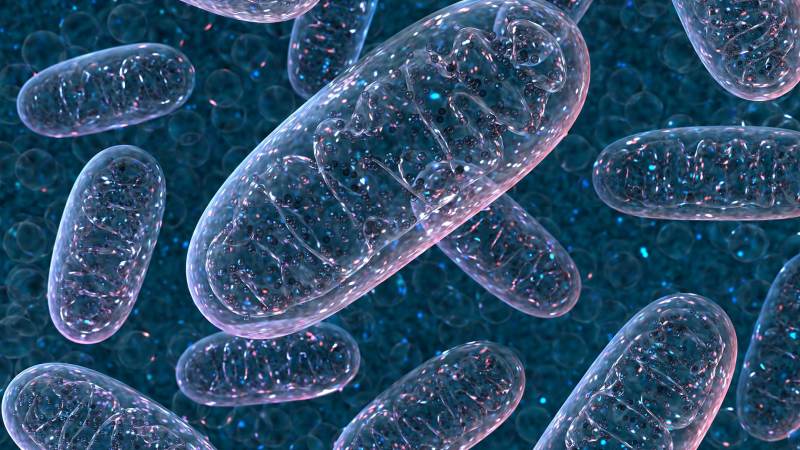Mitochondria and performance
Mitochondria are the power plants of the cell. That’s what they used to say. In order to ensure optimal performance in sports, one should therefore keep an eye on the health of the mitochondria.
Mitochondria are the conversion sites for ATP from glucose and ADP. They are multiplied by reasonable training in the muscle cells. This increases the performance of the muscles.
On the other hand, incorrect training damages the muscles. Mitochondria die and the muscles are poor in mitochondria. It cannot provide enough ATP for the function and performance of organs and muscles.

Mitochondria under the scanning electron microscope
Mitochondria degenaration can also be the cause of PSSM1 and 2.
The muscles have a loss of mitochondria in their structure. In addition, a reduced performance of OXPHOS and electron transfer in PSSM horses can be observed.
The same applies to other lytic muscle diseases.
Mitochondria and Health
Now we know that they are not only the power plants of the cell, which provide energy for all processes in our body. Incidentally, they are significantly involved in the control of the immune system.
Free mitochondria, which are discharged from the cell in the event of deficiency symptoms or damage, control inflammatory processes in the blood. In addition, they regulate necrosis and the breakdown of cells in muscles and organs. Immunity and defense against germs is also affected by mitochondria.
Mitochondria and EMS / laminitis
Mitochondria are also of particular importance in the identification of EMS and laminitis.
Thus, the function of the mitochondria is closely linked to the microbiome of the intestine and vice versa. The composition of the intestinal flora also significantly influences the function of the mitochondria. Experimental studies show, that diabetes patients and probably EMS horses, too, have their own, special intestinal flora. This seems to be a condition in other illnesses, too.
In this way, the intestinal flora can be targeted with secondary plant substances from the phytotherapy and pure substances, such as trace and quantity elements or aminoacids.

A platn perfectly adapted to help mitochondria: a blueberry.
Full of vitamins, trace elements und secundary plant substances
Why are blood analyzes of the function of mitochondria useful
- During training to optimize the training sessions
- To increase in performance
- Keeping your horse healthy
- Control of EMS / laminitis
- Optimization and control of the intestinal flora
- Supportive therapy for allergies